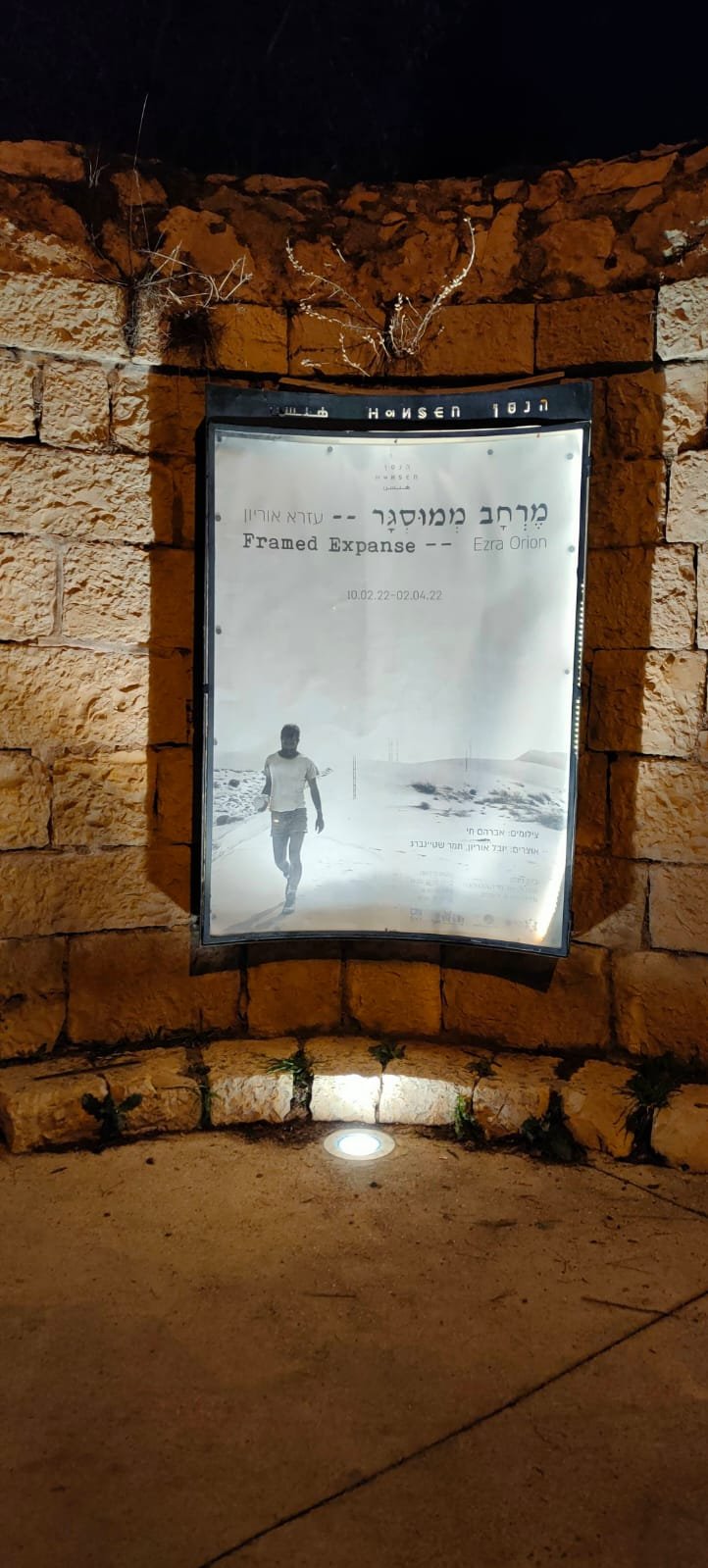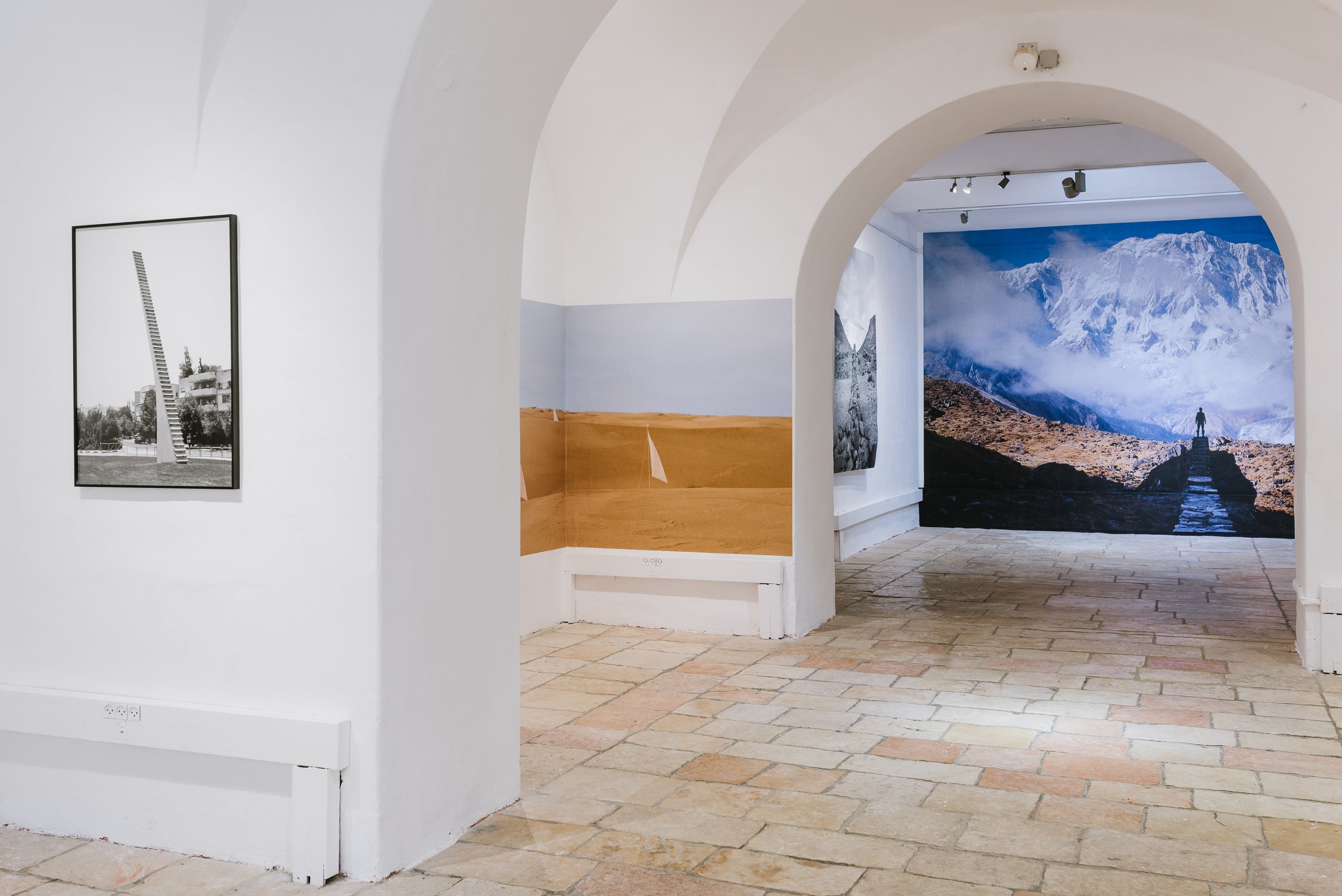
Framed Expanse - -
The Environmental Sculpture of Ezra Orion
Exhibition | Hansen House | Jerusalem
February 10th - April 2nd, 2022
Ezra Orion was one of the pioneers of environmental sculpture in Israel. I was given the opportunity to curate and design a comprehensive exhibition of his work for the Hansen House Gallery. The curation had to solve the built-in paradox of trying to display environmental sculptures inside a gallery space. I utilized large scale prints of Avraham Hai’s photographs of the pieces as well as the architectural attributes of the 180 year old structure in an effort to recreate the experience of standing before the sculptures.
Time.
4 Months
Role.
Co-Curator (with Tamar Steinberg) | Graphic Designer
A sculpture is a generator.
It is an essence which launches a delta of consciousness processes,
that reach far into space and time - - far beyond the physical generator
This is a process in which the individual creates a generator, which connects with a sensitive receptor
Within whom awaits, primed, a reservoir of associations
Multi-directional and multi-leveled - -
In which there are telescopes of the consciousness
Gaping towards infinity - -
Ezra Orion, 2001
Ezra Orion, artist, poet, man of the desert, was one of the pioneers of environmental sculpture in Israel. When he first ventured out to sculpt in open expanses, he was driven to create a meaningful experience in the viewer. He saw the sculpture as a generator, one with the power to highlight internal processes in man’s consciousness. To do so, the sculpture must be “total” – large and encompassing. “Urban Sculpture” forces “stifled”, miniature, gallery-proportions on the creation, while the desert expanses allow the sculpture to burst forth.
Over time, Orion’s theories regarding the open space changed and to the sculpture-viewer relationship he added nature, as a driver for creation.
According to Orion, the sculpture and the natural vista are both sculptural forms, mass shaped by different forces over time. Due to its scale and power, nature reaches deeper into one’s soul. To create a sculpture that generates a powerful spiritual experience, all that the artist must do is augment nature so as to focus the gaze and glorify the experience.
Thus, for example, building a staircase of local stone, places the climber in front of the Himalayan peak, highlighting his smallness when compared to the tectonic sculpture. The installation is transformed from an object to be seen, into an almost religious site to which one makes pilgrimage, a launch pad of the viewer’s consciousness towards the infinite.
There is a built-in paradox in creating an exhibition about environmental sculpture in a gallery. Returning the sculptures into the man-made, constrained space, contradicts Orion’s drive to venture into the open. Thus, this exhibition does not deal with the sculptures directly, but focuses on his concepts and the sculpture-site-viewer relationship. The conceptual process is made possible through a connecting party, one who joined Orion in his work – art photographer Avraham Hai.
Hai steps into the viewer’s shoes so that his photographs not only document the sculptures for those who could not travel to the faraway deserts, but also capture the experience of the viewer who stands before the sculpture. The choice of photographs and their installation incorporate Orion’s approach to environmental installation by turning the gallery into a sculptural expanse. Thus, we can recreate if only for a moment, an experience – a new and different launch pad of human consciousness.
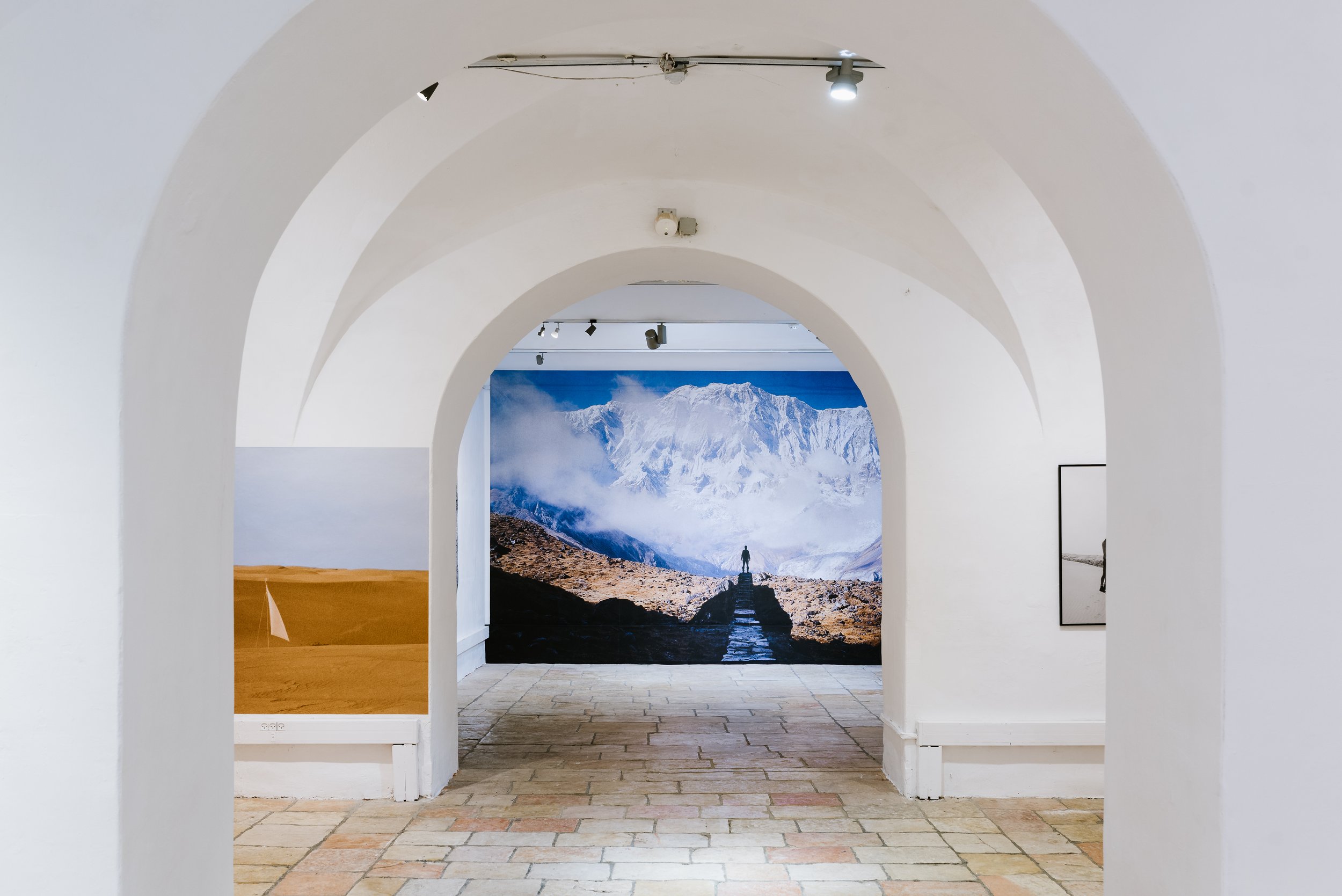


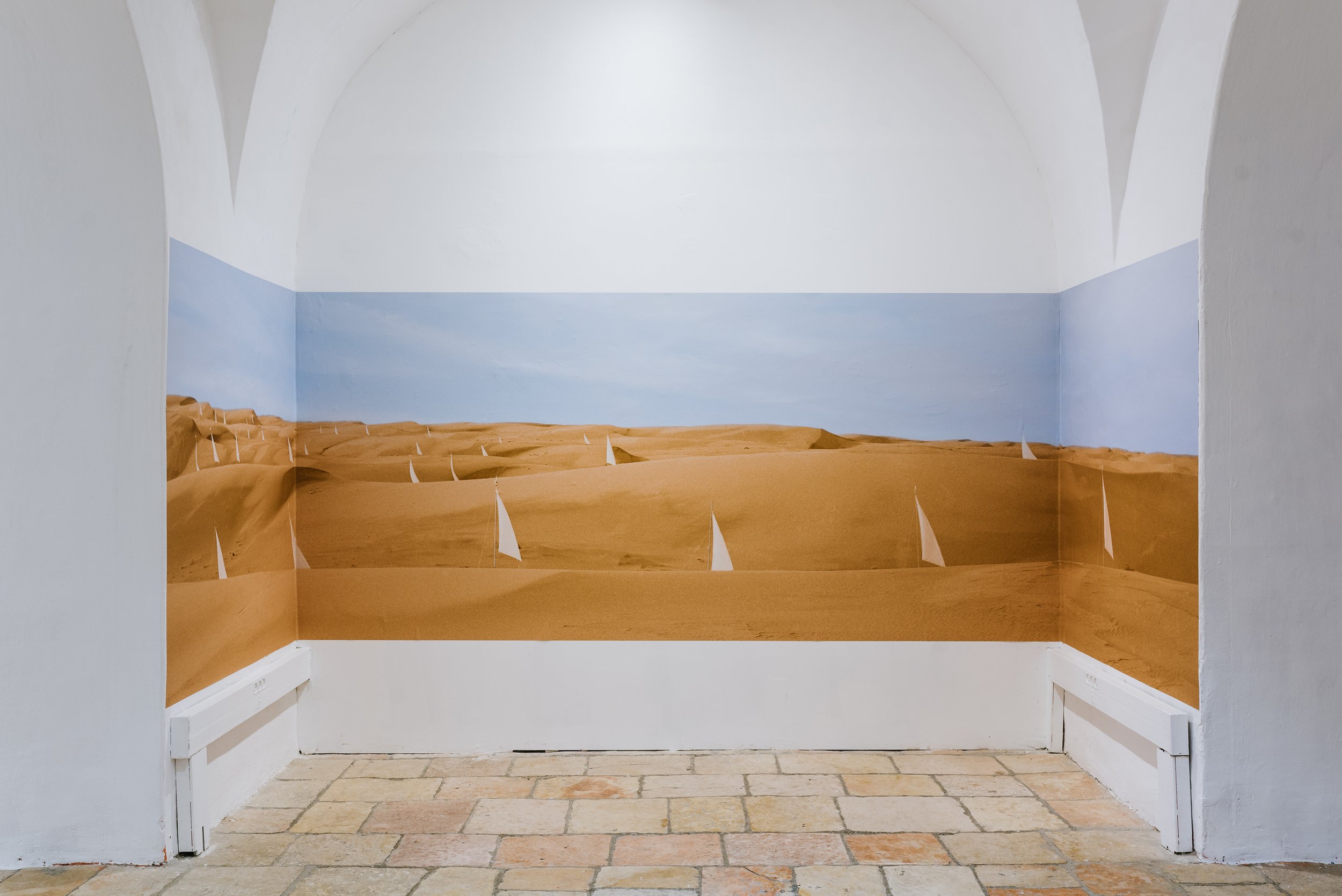
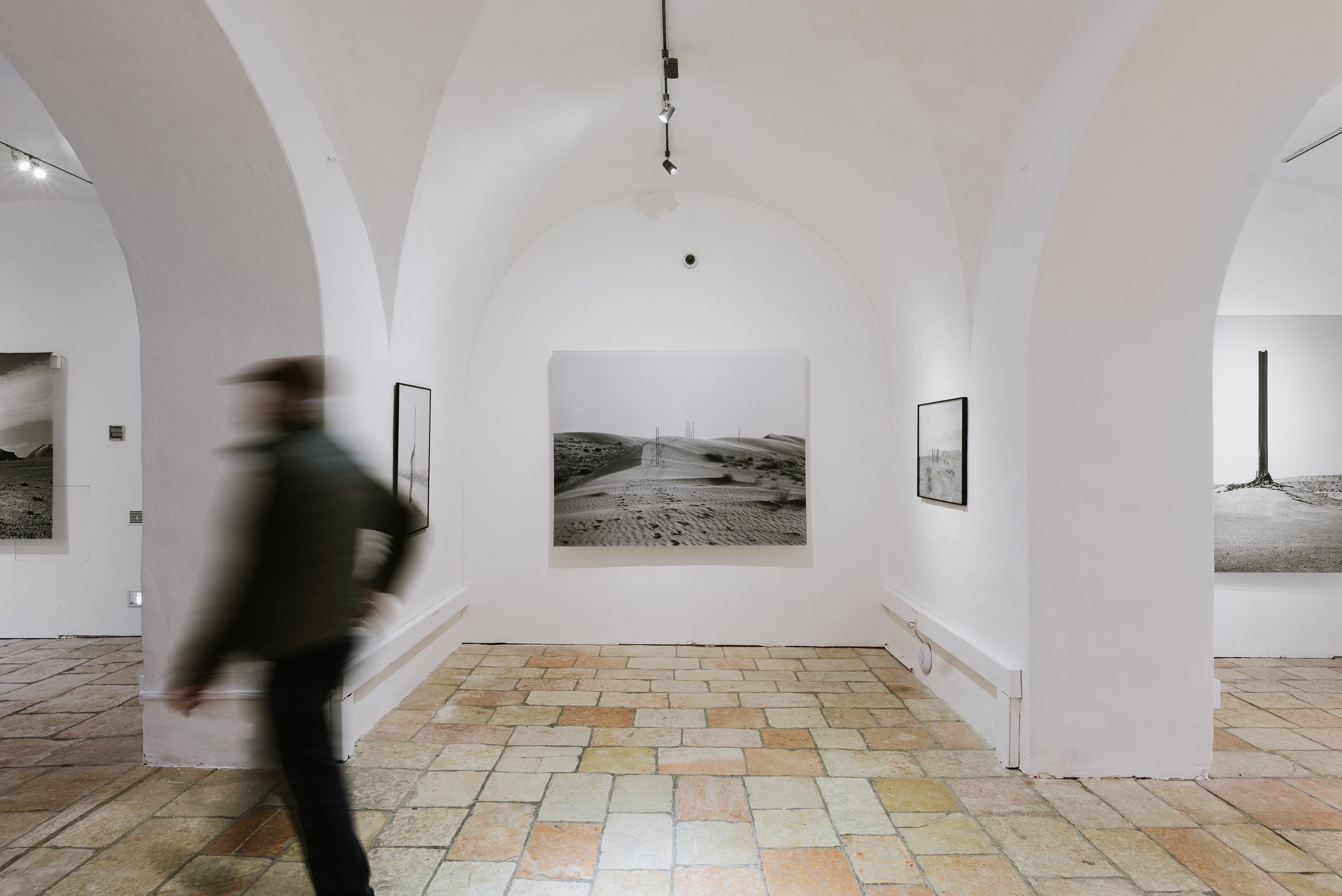
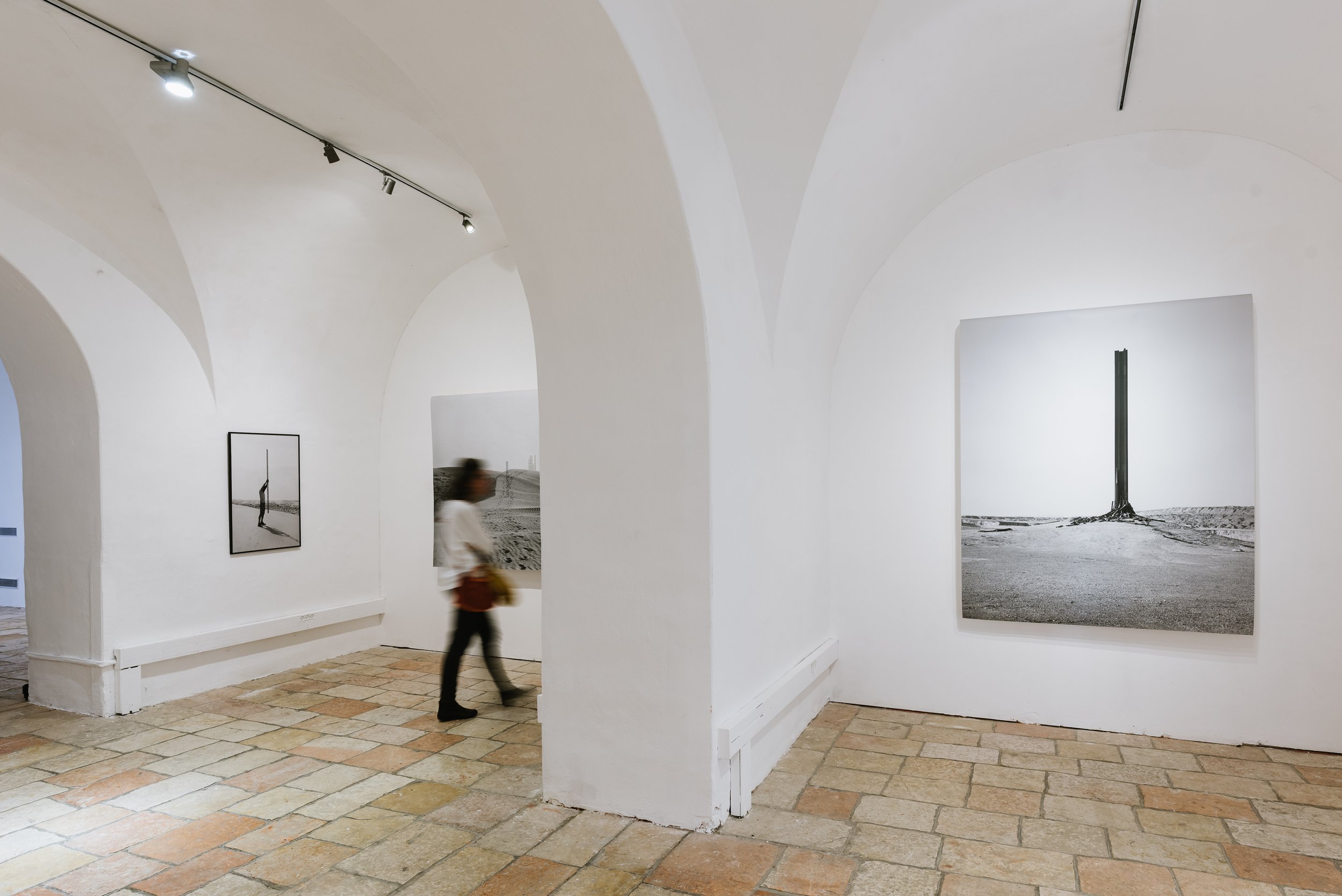


In addition to the curation of the exhibition, I also designed all the graphics accompanying it -
a brochure with a ‘map’ guide, exhibit poster and digital banners and invitations.




